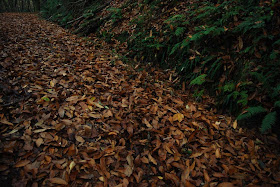








I wake up this morning and the first news headline I see is "Angry Haitians block roads with corpses - witness" Haiti looks like a vision of Hell and I can't really imagine how bad the situation on the ground must be. Aid is coming now but Haiti is one of the poorest nations in the world and I doubt it has the machinery to cope with anything of this scale. Where was the aid in the years previous to this catastrophe? It might be cynical of me and in an ideal world we would welcome the help of 10,000 American troops, but this isn't an ideal world and I do wonder exactly what so many American soldiers will be doing there.
On the ninth of December we had the mysterious Norwegian Spiral, something which has been explained in various places as being an experiment called Tequila Sunrise, using the EISCAT (European Incoherent Scatter Radar site) an international ionospheric research facility located in northern Norway near Tromso. This facility is recognised as being a european version of HAARP.
There is some interesting paperwork and information linked at seattle4truth youtube site, RigInt turns up some good research and there is much to be found in many other places. The stunning photos taken in Tromso facing across the harbour and looking south eastwards across the Sawback Mountains seem to point directly to the location of the Eiscat facility which coincidentally or not was in operation at this time. Sometimes "World Days" are organised which co-ordinate two or more of such global apparatus to experiment simultaneously.
The icy polar regions seem to extend their reach north and south, whilst the more central parts of the world are exposed to the sun and fire. I saw somewhere the other day that it was 30.6 degrees Celsius in Melbourne the other night combined with what appear to be unlikely temperatures in the daytime. Around here in the Southwest there has been a thaw and the temperatures are now a balmy 3 to 7 Celsius with more of our typical rain and gales on the way.
Up on the hills some snow has melted, exposing the leafy ground. I see lots of very happy birds foraging in this warm and sunny food zone. On closer examination I observe the first couple of inches of green shoots of bluebells peering through the ground amidst the snow, although Spring could be a long way off still.
It turns out that parrots could have actually existed in Norway. Dr David Waterhouse of Norwich, Norfolk, found that a fossilised wing recovered from a mine in Denmark came from a bird which belonged to the parrot family, though they became extinct 55 million years ago and are thus very much bereft of life.



















